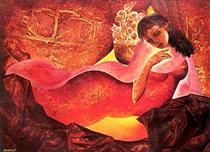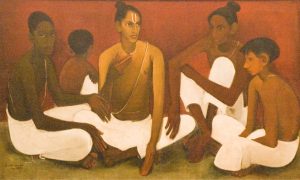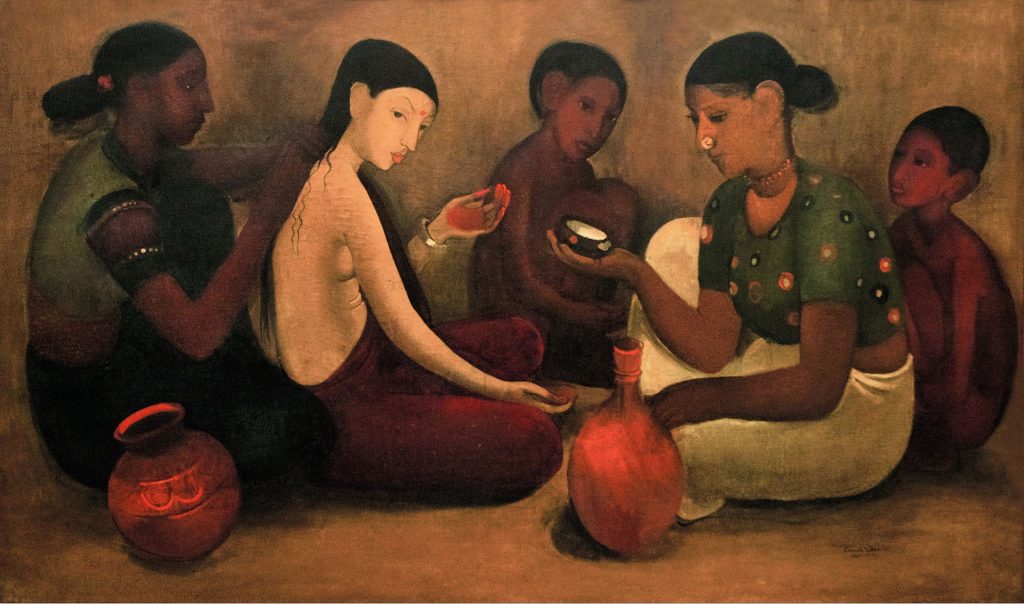Abhishek Kumar
JANUARY 30, ON THIS DAY
“As soon as I put my foot on Indian soil, my painting underwent a change not only in subject and spirit but in technique.”
Amrita Sher-Gil

Amrita Sher-Gil was an Indian painter who was active in the 1930s. She is considered one of the most important Indian artists of the 20th century. Her paintings often depicted Indian people and their daily lives, as well as her own experiences as an Indian woman in Europe. Symbolically, her paintings often explored the theme of Indian identity and the contrast between traditional Indian culture and Western influences. She also used symbols such as the lotus flower, which is a traditional symbol of beauty and purity in Indian culture, to convey deeper meanings in her work. Overall, Amrita’s paintings are a blend of Indian and European styles, and her paintings are considered to be a symbol of Indian self-awareness in the colonial period.
Sher-Gil’s paintings often depicted the lives and emotions of ordinary people, particularly women and children, and she often used bold, vibrant colours and strong brushstrokes to convey the energy and vitality of her subjects. Her work also reflected her interest in Indian mythology and spirituality, and she often incorporated symbols and motifs from Indian art and culture into her paintings. In addition to her use of traditional Indian symbols and motifs, Sher-Gil also drew inspiration from the work of European painters such as Paul Cezanne and Pierre-Auguste Renoir. She was particularly influenced by the work of the Post-Impressionists, and her paintings often display a similar sense of movement and emotion.

Sher-Gil’s paintings also explored the theme of Indian identity and the contrast between traditional Indian culture and Western influences. She often depicted the lives of Indian people and the impact of British colonial rule on Indian society, and her paintings often serve as a powerful commentary on the social and political issues of her time. Amrita Sher-Gil’s paintings were also marked by a sense of self-awareness and introspection. She often used her own experiences and emotions as inspiration for her paintings, and her work often reflects her own struggles with identity and belonging. Her paintings were a reflection of her own personal and artistic journey and her constant exploration of her own self.
Sher-Gil’s work also reflects her deep understanding of human nature and the emotions of the people she painted. Her paintings often depict the human form in a way that is both realistic and expressive, capturing the inner thoughts and feelings of her subjects. Her work is also filled with a sense of sensuality and eroticism, which is a reflection of her own liberated and independent spirit.

Sher-Gil’s paintings were a reflection of the time she lived in and the world around her, her work often depicted the struggles and challenges faced by Indians under colonial rule and the impact of Western influences on Indian society. Her paintings were a way of expressing her own views and ideas on these issues and her work was not just a representation of the world but also a commentary on it.
Amrita Sher-Gil’s paintings are a powerful blend of artistic skill, personal introspection and cultural exploration. Her paintings continue to be admired for its ability to convey the complexity of human emotions and the social and political issues of her time. Amrita Sher-Gil’s paintings are a powerful blend of Indian and European styles and themes, and her work continues to be highly respected and admired for its artistic skill and its ability to convey the richness and complexity of Indian culture and society.
Sources:
- https://en.wikipedia.org/wiki/Amrita_Sher-Gil
- https://www.simplykalaa.com/post/amrita-sher-gil
- http://amrita-sher-gil.com/
- https://www.culturalindia.net/indian-art/painters/amrita-shergil.html






